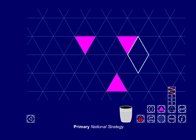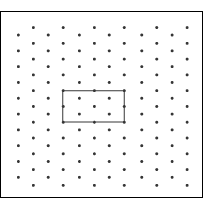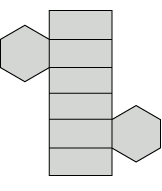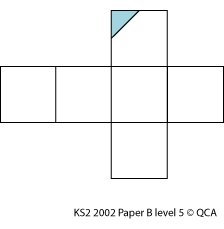Consolidation and practice
These resources are to support children in guided or independent work. Roll over the highlighted resource for a description.
Isometric grid

This interactive teaching program (ITP) is an ICT-based tool to support the exploration of shape and space. Isometric grid ITP allows the child or teacher to display equilateral triangles. The grid can be hidden or become an isometric pin board. An 'elastic band' can be stretched around the pins to create outlines. Rhombuses can be selected and dragged to different positions on the grid, and then locked together to form representations of 3-D shapes.
Opportunities to use and apply
Possible contexts include:
- Design and technology, e.g. Design and build packaging for a product; design and build a set of nesting cartons.
- Art, e.g. Create a picture/pattern on a net so that it flows around the faces of the 3-D shape.
- Visualising, e.g. Look at some unusually shaped boxes, visualise flattening them out and describing the nets, use a construction kit to build net or draw it, fold up to check.
 'Mathematical challenges' Year 5 and Year 6: | 1.2MB
'Mathematical challenges' Year 5 and Year 6: | 1.2MB  A perfect match
A perfect match
Confirming learning
Ask probing questions such as:
- Complete this net for a triangular prism: Can you create a net for a different triangular prism using the same face as a starting point?

- The number of spots on opposite faces of a normal die add up to seven. Draw a net for a die and include the spots.
- This net folds to make a tetrahedron. Shade the blank face so that the shading matches along each edge:

- Use isometric paper to make a net for a hexagonal prism. Colour it in three colours so that no two touching faces are the same colour.



 Understanding shape
Understanding shape


